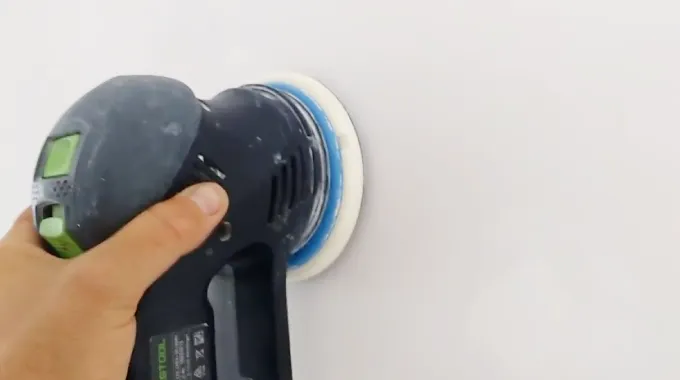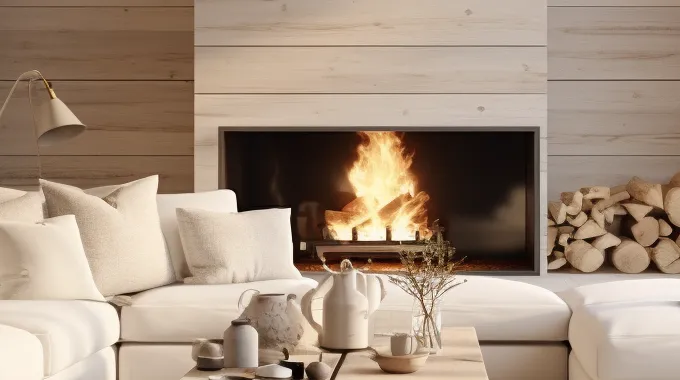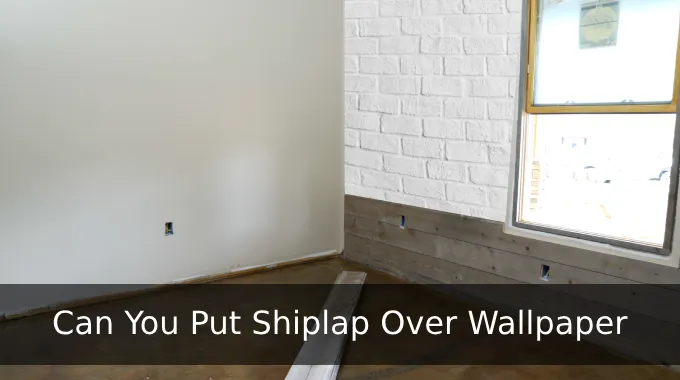Last Updated on March 19, 2023
Remodeling a home or building may seem straightforward, but one of the most common steps is sanding drywall. It can be dangerous if not done correctly. Not only is there an increased risk of exposure to toxic particles and inhalation of harmful dust, there are even potential health consequences in the long term.
So before sanding, it’s essential to understand the risks involved and ensure everyone around you is safe. Taking five minutes on preventive measures can mean an entire day of health, happiness, and sparkly results.
If you don’t know where to start, no worries. We’ve got you covered. Read on to discover the reasons why sanding drywall can be dangerous and provide tips on how to minimize risk when performing this task.
Why Is Sanding Drywall Dangerous: Major Reasons
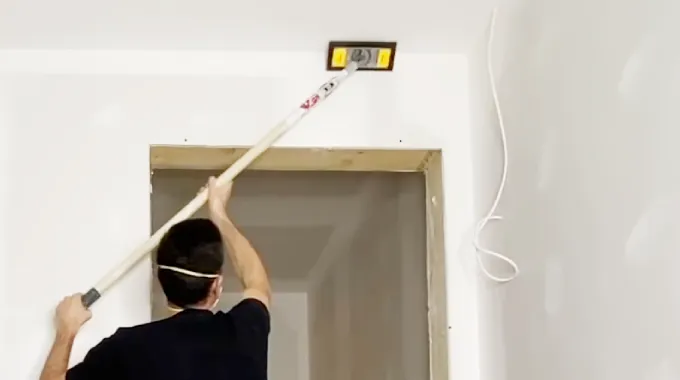
Drywall sanding can be dangerous for people doing it and for those who come into contact with the material after it’s been sanded. Dust particles, chemicals, gases, and particles released during the sanding process can all be harmful.
Some of the main reasons are as follows:
Respiratory Health Issues
Sanding drywall is dangerous to respiratory health because it can cause inhalation of hazardous drywall dust particles such as crystalline silica, lead, and asbestos. These particles are potentially carcinogenic and can cause various lung diseases like pneumonitis, bronchitis, and asthma.
Inhalation of these particles can also reduce lung capacity by clogging the airways with debris and creating an environment conducive to infection. Long-term exposure to these hazardous dust particles can also be fatal in extreme cases.
Skin Irritation & Allergic Reactions
It is possible to cause serious skin damage by sanding drywall. Chemicals in products used to prepare walls for painting or wallpapering can cause irritation or allergic reactions. These chemicals may contain harmful solvents like methylene chloride that can irritate the skin on contact.
On top of that, toxic gases created during sanding can cause further irritation and itching in sensitive individuals.
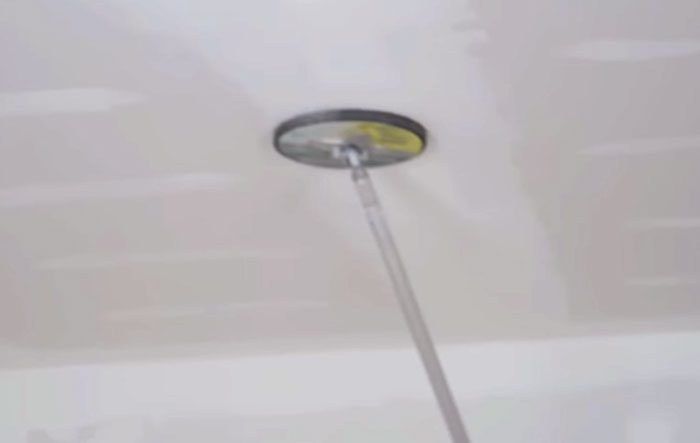
Eye Injuries and Irritation
Without proper care, sanding can result in eye damage. The particles created by sanding drywall can get into your eyes and hurt them if you do not wear the proper safety gear. This kind of eye injury could result in permanent vision loss if not treated immediately.
Even with treatment, infections from airborne particulates could still occur. It could lead to further complications if not addressed by a qualified medical professional in a timely manner. Aside from that, the dust created by sanding may contain carcinogens that could put your vision at risk if unprotected contact occurs.
Lung Damage and Respiratory Issues

During drywall sanding, fine dust particles become airborne, which could be inhaled into the lungs, where they could cause serious damage over time. This includes conditions like pneumonitis (inflammation/infection) and bronchitis, along with other respiratory issues.
Workers or home DIYers may become ill due to prolonged drywall dust exposure without adequate protective measures. Silica-based dust from drywall sanding has increased one’s risk of developing deadly diseases.
Hearing Loss and Tinnitus
Hearing loss is a risk associated with prolonged exposure to high sound levels generated by power tools used for sanding walls. This type of noise pollution can cause permanent hearing loss or tinnitus (ringing in one’s ears).
The World Health Organization has classified occupational noise pollution caused by sanding tools among its list of hazardous environmental agents.
How to Minimize Risk When Sanding Drywall?
Sanding drywall without taking occupational safety measures can be hazardous to your health, but no worries. There are a few wise moves you can make before getting started that ensure the job is done safely.
Here are a few tips for minimizing risks:
Wear Appropriate Safety Gear
When sanding drywall, it is essential to wear appropriate safety gear to protect yourself from dust and debris. Goggles or a face shield should be worn at all times to protect eyes from any particles that may be kicked up in the air during sanding.
A respirator dust mask should also be worn if available, as this will provide additional protection for the lungs from any airborne particles. Also, gloves, a long-sleeved shirt, pants, and a hat should all be worn to protect exposed skin from dust and debris.

You can use the following respirators when sanding drywall:
Half Facepiece Reusable Respirator: This reusable respirator is ideal for construction, woodworking, home decorating, and smelting. It features high-quality silicone material and a convenient quick-release buckle design to ensure a secure fit when wearing it. With this respirator, all accessories are included, so you can use it right away.
Half Respirаtor Face Cover: This face cover features a double filtration system that effectively blocks out dust particles from entering the respiratory tract. It is designed with an adjustable belt, making it suitable for all head sizes. No need to worry about adjusting or readjusting the fit for extended periods of time thanks to the snug fit.
Full Face Reusable Respirаtor Set: Made from high-grade silicone and featuring highly transparent anti-fog lenses, this set provides superior protection from dust, pollen, lead paint, asbestos, and other harmful particles in the air. The double filter system offers maximum protection, ensuring that only clean air passes through.
Prepare The Room Properly Before Starting Work
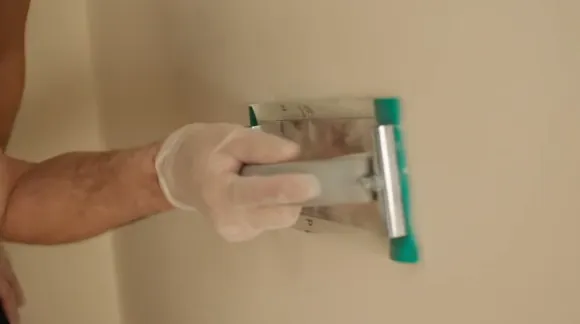
To properly prepare a room for beginning work, it is crucial to cover floors and furniture with drop cloths or plastic sheeting to collect any particles kicked up during sanding activities. Doorways should also be sealed with plastic sheets or other materials to contain dust within the room while sanding activities.
Surfaces such as windowsills and other surfaces should also be covered with tape or plastic sheeting so they can be easily cleaned after work has been completed. As a final precaution, heating or cooling systems should never be turned on when sanding.
Clean Up Dust Regularly During The Job
Cleaning dust during the sanding process is essential to reducing potential dust exposure as much as possible when sanding drywall. The best way to do this is by using an industrial vacuum with a HEPA filtration system that can effectively trap airborne particles without releasing them back into the air again.
It is also beneficial to wipe down surfaces frequently with a damp rag throughout periods of activity, along with vacuuming up any loose particles. This will capture any fine particles that the vacuum cleaner’s hose attachment may have missed.
Does Drywall Dust Come Out of the Lungs?
Yes, drywall dust can come out of your lungs. This can occur when tiny particles of drywall dust are breathed in and travel through the bronchial tubes into the lungs. Once inside the lungs, these particles may be coughed back up or expelled via sneezing.
It is important to note that any particles that make it through the bronchial tubes and end up in your lungs are no longer able to be expelled by coughing or sneezing. Meaning that those particles will stay in your body until they have been broken down and eliminated naturally.
How Long Does Drywall Dust Stay In the Air?
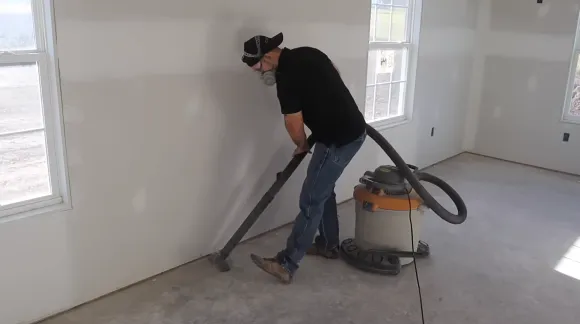
The length of time that drywall dust stays suspended in the air depends on several factors, such as room size, ventilation, temperature, and humidity. Generally speaking, drywall dust particles remain airborne for 5-10 minutes before settling on a surface or being circulated.
After being on a surface for some time, these particles can become re-suspended if disturbed. Also, be sure to properly ventilate any areas where you’re doing any kind of construction work with drywall to help keep airborne particles from lingering too long indoors.
Can Drywall Dust Cause Cancer?
Yes, drywall dust is potentially cancerous due to the presence of toxic substances in the drywall sheet and joint compound. Inhaling the microscopic particles of these substances over a long time can lead to breathing problems and even lung cancer.
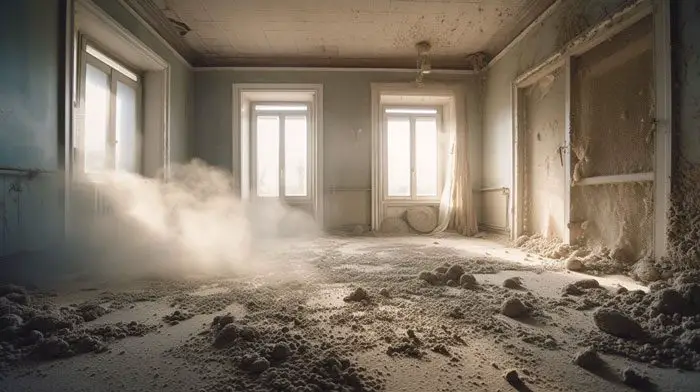
Talc, calcite, mica, gypsum, silica, and mercury have all been found in drywall dust, with talc and silica dust being the most common sources of potential toxicity. Even though tiny amounts of these things may not harm you immediately,
But regular exposure can make you sick. For example, you could get asthma or lung cancer.
Is It Necessary to Wipe Off Drywall Dust?
The dust from drywall must be wiped off because if left on the surfaces, it can be embedded into the paint and create an uneven texture. Aside from that, drywall dust can contain pollutants such as asbestos and lead. Which can become airborne and can cause health issues, as you already know.
Therefore, when dealing with drywall dust, it is essential to use a damp rag or vacuum cleaner to clean drywall dust thoroughly. Aside from that, if left unchecked, the drywall dust will become ingrained in the paint and eventually form a hard crust which can be difficult to remove.
Even small amounts of visible dust can affect the finish of a paint job, which is why it is essential to wipe all visible dust.
Avoid Health Hazards: Take Safety Precautions When Sanding Drywall
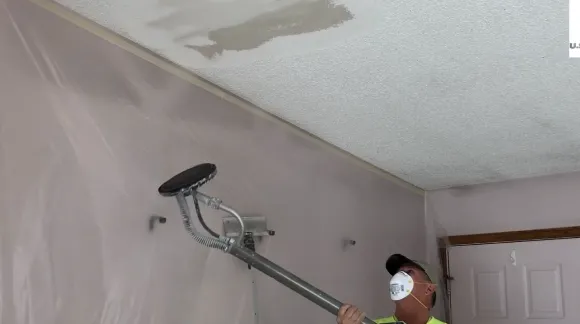
No one should take unnecessary risks to their health, which is why it’s crucial to follow the above safety guidelines when sanding drywall. Wear a face mask and other protective gear to protect yourself from dangers. Also, vacuum and wipe surfaces often to capture any particles that escape into the air.
Ultimately, being aware of the risks and implementing safety measures can help keep you safe and healthy when sanding drywall. So now that you know the dangers of sanding drywall, it’s time to get to work and ensure that your home is looking its best. Remember, your health is worth protecting.
